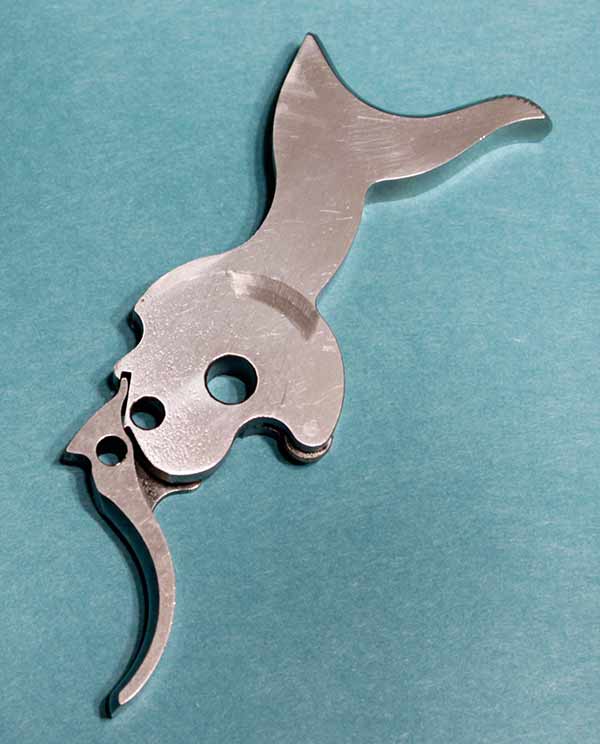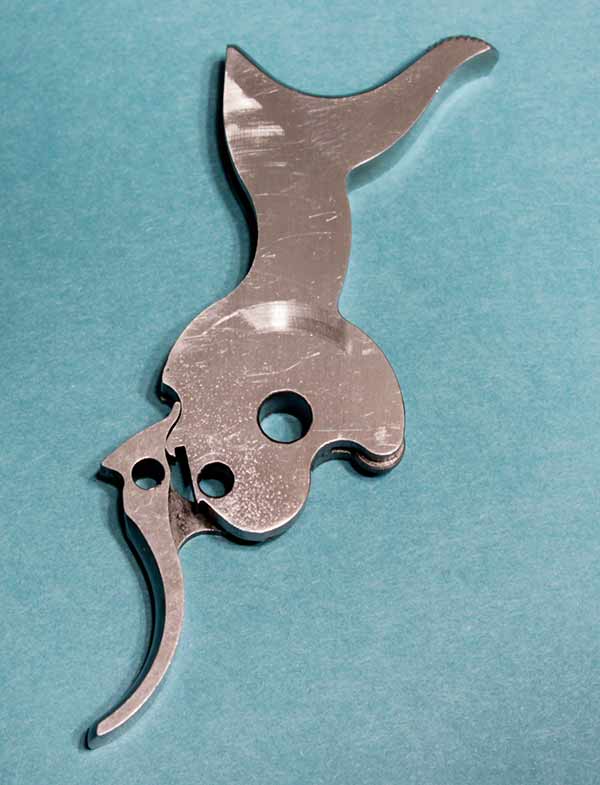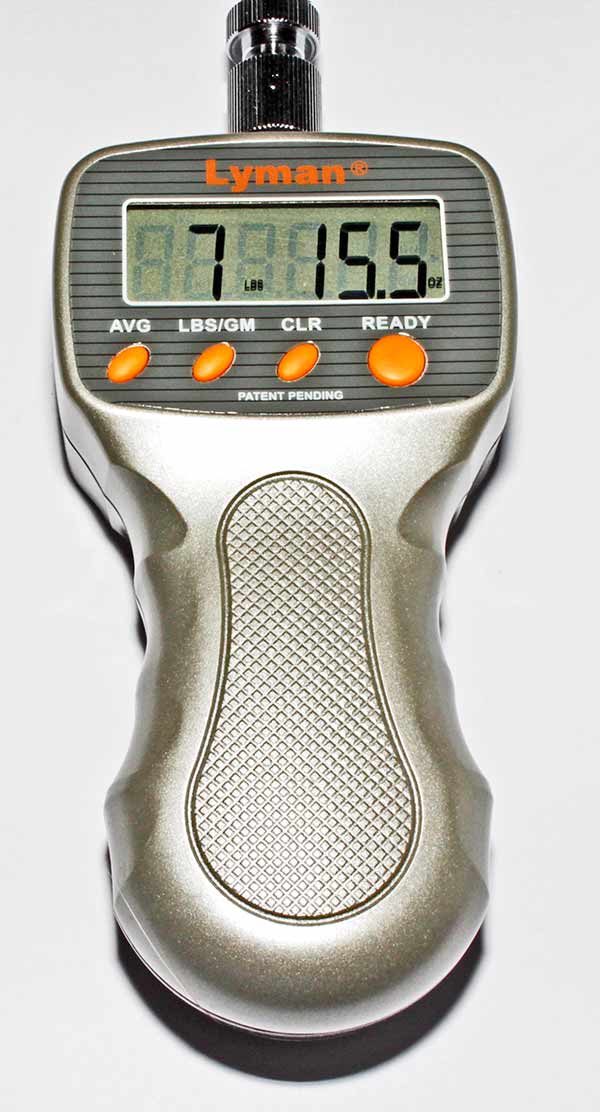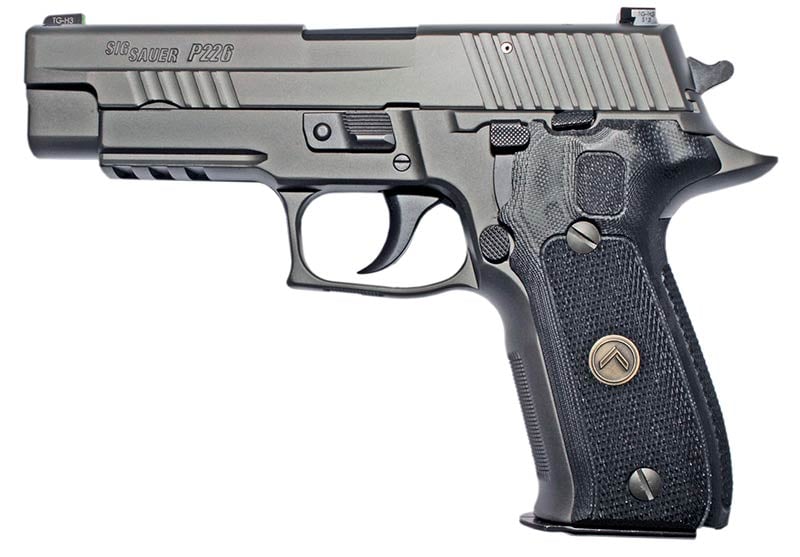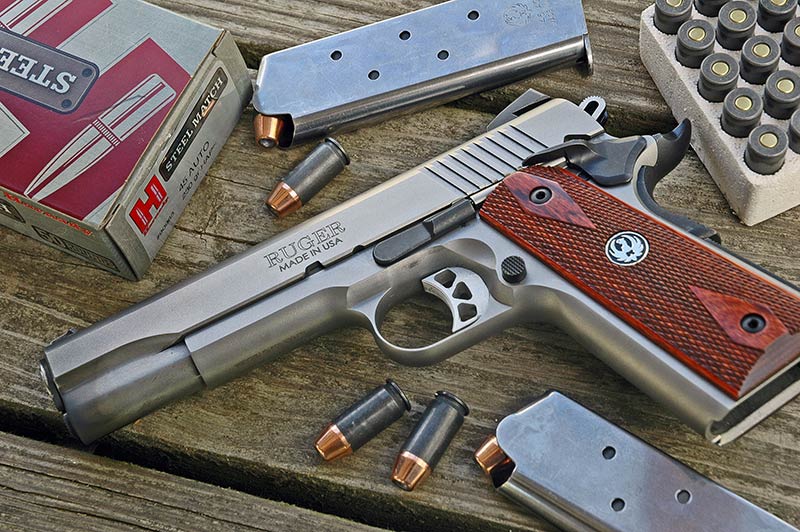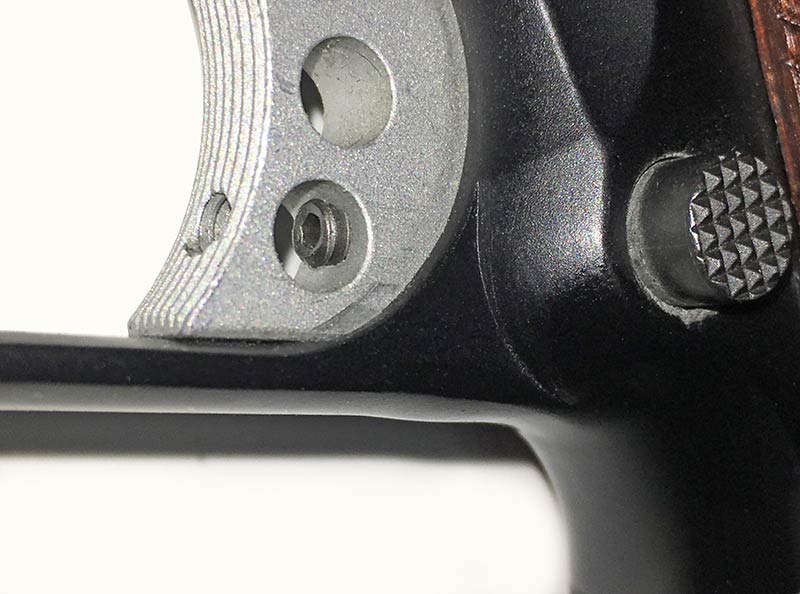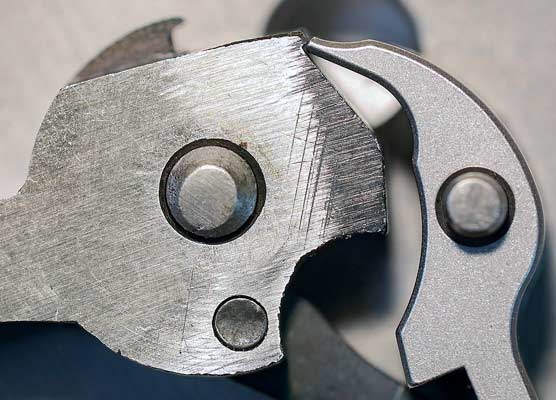Trigger Nometry
Triggers … Demystified
Squeeze them, pull them, press them, slap them, whatever you do to make a gun go boom, you do it with a trigger. Arguments abound about how you do it and what you call that action. Reviewers will measure the pressure required to pull the trigger and use terms like creep, stacking, grungy, gritty, mushy, wall, break, overtravel and reset. Until I got full-time in the business, I didn’t even think about those different stages of pulling a trigger, much less what to call them. I figure I’m not alone. After attending gunsmith school and gathering a few instructor ratings, I now sort of understand it, so I figured I’d pass along to you folks what I’ve learned.
When my Dad started teaching me to hunt with a single shot .410, he told me to “squeeze” the trigger until the gun went off. That way I would be surprised and wouldn’t flinch or jerk the gun in anticipation of the shot. At Boy Scout camp a few years later, I started working my way through the NRA Junior Marksmanship awards with a .22 rifle. The instructor there told me the same thing about the trigger. “Squeeze it,” he said. Guess what the drill sergeant at Fort Polk told us in 1969 about shooting the M16. You got it — he told us to squeeze it.
I hunted for years without knowing you “slap” the trigger on a shotgun. There are endless arguments about whether you “press” “pull” “squeeze” or otherwise manipulate the trigger on handguns and rifles. Frankly, I don’t care what you call it, as long as you use your trigger finger to move the trigger steadily backwards from start to finish without moving the gun from side to side or up and down. Make it one, smooth, continuous movement from start to finish while keeping the gun steady.
Getting There
One way you get good at this is through dry firing. Make sure there’s no ammunition in the gun — and the gun’s manual says it’s okay to dry-fire it — then practice that trigger movement over and over while aiming at a safe spot. Concentrate on the front sight and you’ll see whether or not you’re causing the gun to move with your trigger action. Put a coin on top of the gun and practice activating the trigger without the coin falling on the floor. That’s our part in the trigger operation, but what about the gun’s?
The second word of the coined name for this article comes from a Greek word meaning “to measure.” The most common thing measured in triggers is the force exerted on the trigger to get it to “break” and fire the gun. This is measured with a gauge like the Lyman Trigger Pull Gauge. When I got my Lyman, I went crazy measuring the trigger pull on all my guns. I won’t bore you with all of them but I’ll just mention a few. My Daisy Red Ryder BB Gun averages breaking at 7 lbs. All my 1911s break at just under 5 lbs. The SIG P229 Legion averages 11 lbs. 12 oz. for its DA pull and 5 lbs. 11 oz. for its SA pull. To get a trigger pull measurement, you really should make it an average of five pulls because it’s rare for any gun to measure the same pull weight every time.
It’s important to understand the sear and its part in trigger action. The sear is the part of the trigger mechanism holding the hammer or striker back until the correct amount of pressure has been applied by movement of the trigger to release the hammer or striker to hit the firing pin. It’s sort of like a door stop. Kick it out of the way and the door slams. The trigger “kicks” the sear out of the way so the hammer or striker can slam forward into the firing pin.
Actions
Because there are different action types (single-action and double-action) and different mechanisms (hammer-fired and striker-fired) all the trigger movements we’re going to discuss don’t occur with every gun. Most guns have a hinged trigger, meaning it rotates around a pin. The hinged design is helpful for triggers that must both cock and fire the gun.
In contrast, 1911s have a straight-pull trigger. Its only movement to fire the gun is straight backwards. The sear on a 1911 is behind the grip in line with the trigger. The trigger has a bow traveling on both sides of the magazine well to connect with the sear at the back part of the grip.
Trigger movement is classified into two main parts — Pre-Travel and Over-Travel. Pre-Travel is everything occuring up until the time the sear breaks and the gun fires. The first thing you generally encounter in practically every gun is take-up, also called slack. With take-up you don’t encounter any resistance, so you don’t really feel anything. On most of my 1911s, there’s about .125″ of take-up.
I have a Taurus 24/7, which is a DA/SA striker-fired pistol. If the gun is in the double-action mode, the take-up is .25″ or slightly more, but if it has been fired and is in the single-action mode, the take-up is more than .75″. In the first case, you meet resistance almost immediately and the gun eventually fires when the trigger is almost at the frame. In the second case, you don’t meet any resistance until the trigger is almost at the frame. In either case, the point at which you start feeling that resistance is the wall. From the wall until the trigger breaks, the resistance you feel is creep.
The mainspring is being compressed as the sear is being moved. You don’t get creep in a single-action gun or when a DA/SA gun is in the single-action mode because the resistance from the mainspring was already overcome when the gun was cocked. In that case, the sear’s job is simply to release the hammer or striker so the mainspring action can slam it forward to strike the firing pin.
In some guns, while you’re in the creep stage, you may feel steps or inconsistent movements in the sear. These steps will typically require you to add more force to reach the break. These steps are what’s called trigger stacking. Most triggers exhibit some stacking, perhaps imperceptible, but a trigger making you pull harder and harder as you approach the break has what is usually called “stacking issues.”
Grungy Triggers
Take-up (slack), the wall and creep are all part of Pre-Travel. When reviewers talk about a grungy, gritty or mushy trigger, they usually mean the creep phase is inconsistent and unpredictable, with multiple steps. A “smooth” trigger experiences no perceivable stacking, just a steady compression of the mainspring as you pull the trigger rearward to the point where it breaks. At the break, the sear releases the hammer or striker and the gun fires. If the gun is not loaded, as in dry firing, you’ll hear a click and maybe feel some vibration as the mainspring releases the hammer or striker.
After the break, any continued rearward movement of the trigger is called Over-Travel. Over-Travel is usually stopped by something mechanical, usually the frame. Some 1911s have an adjustable over-travel stop built into the trigger. The stop is a small Allen-head screw, adjusted so the back of the trigger hits against the frame sooner or later as needed. Many firearms have no stop other than the frame, while others such as the Smith & Wesson M&P series have a stop built into the trigger which hits another stop on the frame.
Trigger reset occurs after the break when the shooter lets pressure off the trigger and the trigger moves forward to a position where it can be fired again. Competition shooters train to detect the reset point so their follow-up shots can occur quickly. Self-defense shooters may also benefit from such training. The reset will vary by gun. Some gun models, such as Sig Sauer’s P-series semi-autos, can be optionally outfitted with short-reset triggers.
Any discussion on triggers must include what can be done to improve a “bad” trigger or to make a good one even better, something commonly called a “trigger job.” Do not make any DIY modifications on a gun you carry for self-defense. Even a gunsmith mod on your carry gun should not have less than a 4 lb. trigger pull. In days past, many law enforcement officers would have their S&W or Colt revolvers modified to have a “hair” trigger that could be fired with a very light touch. Prosecuting attorneys can have a field day with modified triggers, especially ones with very light pull necessary to fire them.
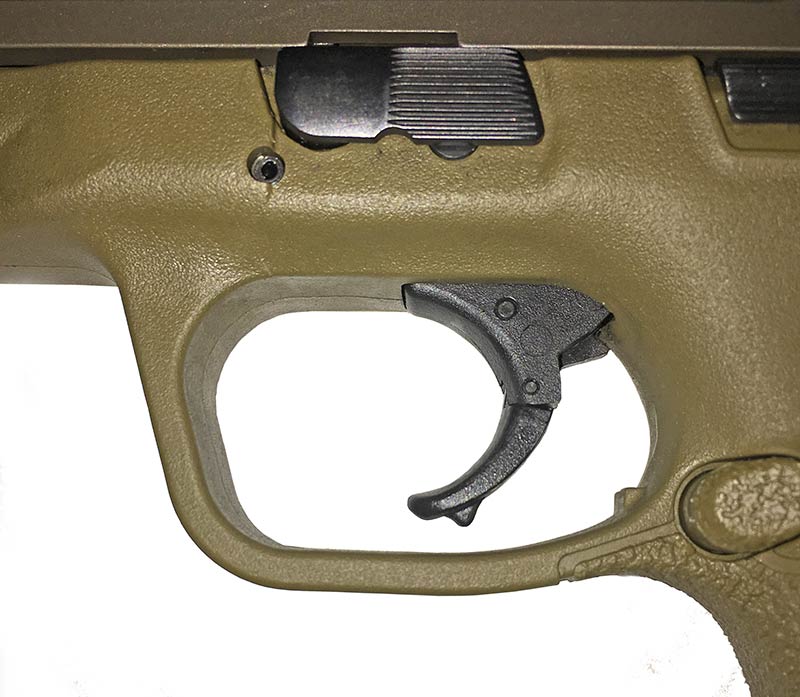
Built-in Travel Stop — On this M&P you can see the overtravel stop built into the trigger and the frame. The M&P has a unique trigger safety.
When pulled correctly the small tab on the back of the trigger near the top fits into a slot in the frame. If the trigger isn’t pulled properly, that tab prevents the trigger from going past the break point.
More Mods
Modification can be done for reasons other than to lighten the trigger pull. One is to make the pull very smooth, i.e., without stacking. A good trigger job usually begins with an examination of the hammer, sear and any linkage parts for roughness or burred edges. A gunsmith will smooth these with a stone, and that may be all that’s required for smooth operation. Going a little further, the angle of interface between the hammer and sear may be modified to lessen the pressure required to make the break occur.
Other modifications may include changing the mainspring or trigger springs, reducing the pressure required to move the trigger. Spring tension must be balanced to insure adequate pressure is applied when the hammer falls or the striker is released so the firing pin has enough force to activate the primer. Aftermarket triggers can often provide better performance without jeopardizing rights of defense should you be involved in a self-defense shooting. Apex Tactical Duty/Carry Action kits for M&Ps and other makes and models smooth the action considerably while maintaining a safe trigger pull weight.
While preparing this article, I revisited the triggers on some 30 handguns. Among eight or nine 1911s there was no perceptible difference in slack or pounds of pull at the break, which is one reason these guns are so popular. Most of my single-action revolvers are either Ruger or Uberti and they all have simple, smooth and easy-breaking triggers. Among the double-action revolvers, I found the Ruger GP-100 and S&W 686 triggers delightful, with no slack and no stacking. My hammer-fired semi-automatics are mostly Beretta and Sig Sauer, and I have no complaint with any of their triggers.
BPicsut a relatively new addition, the CZ P07 has the best feeling trigger of the bunch. Among the striker-fired pistols, the Springfield XDm has what I feel is the best trigger, followed by the M&P, then the Glock 19. I don’t seem to have kept any guns with really awful triggers. Maybe there’s a reason why!

